Everything you need to set up your therapy office
Think back to the moment you stepped into your very first therapy office.
Maybe it was as a therapist starting out, or maybe it was on the other side of the couch, seeking support for yourself. Either way, you probably noticed the room. Not the credentials or the lighting alone—but the feeling of the space. The vibe. The sense that someone thought about how you would feel the second you walked in.
That’s what we’re recreating here.
As therapists and holistic practitioners, our space isn’t just where we “work.” It’s where our clients soften, open up, and let themselves be seen. And that’s why choosing the right furniture is about so much more than just aesthetics. It’s about function, feeling, and flow.
In case you’re new here, I’m Natalia, a website designer for therapists and practitioners. I help private practice owners like tú amplify their magic, gain visibility, and simplify their marketing efforts through strategic web design and SEO content.
And today, we’re going beyond the screen to help you create an in-person experience that holds just as much power. Let’s design your office with intention, clarity, and ease.
How to furnish a therapy office?
Think like a client: what do they see first?
The moment someone walks into your office, their body and nervous system begin to scan for safety. They notice the light, the sounds, the colors, and—yes—the furniture. What do they see first? A messy corner or a welcoming chair? A cold desk or a softly lit space?
Design your space with their journey in mind. The room should say, "You can breathe here."
Balancing function with flow and aesthetics
Your office is both a workspace and a healing space. You need furniture that supports your sessions, flows with your movement, and reflects who you are. Think about layout: how will clients sit in relation to you? Where will they set their coffee mug or purse? How do you want to feel as you walk into the room each day?
Aesthetic matters too—not because we’re trying to impress, but because beauty helps regulate the nervous system. Soft tones, natural materials, and intentional design can do more than you think.
Essentials vs. extras: what you really need
Start with the core:
- A solid, clean desk
- Comfortable armchairs or a couch
- A rug to ground the room
- Good lighting
- Shelving or storage
- Side tables for functionality and warmth
- Personal decor (plants, art, sensory elements)
Let’s walk through each together—with product recommendations I personally curated for you.
What is the best desk for a therapy office?
Compact, minimalist desks that fit small rooms
If you have a small therapy office, you need something that keeps clutter away and blends in. Look for simple lines, calming colors, and just enough surface to hold what you need.
- HDOFM – $84.99
A clean, minimal surface that keeps visual clutter to a minimum. Ideal for smaller spaces or those who crave simplicity.
buy now →

Standing desks: are they worth it?
Standing desks can offer posture relief during long note-taking sessions or virtual calls. If you alternate between sitting and standing during admin time, this might be a great investment. While this post focuses on fixed desks, this is a category worth exploring if you have the space and budget.
My top desk picks for therapists on a budget
- Tribesigns – $159.99
A modern, mid-century design that brings both style and storage into your space. A great anchor for your workflow.
buy now →
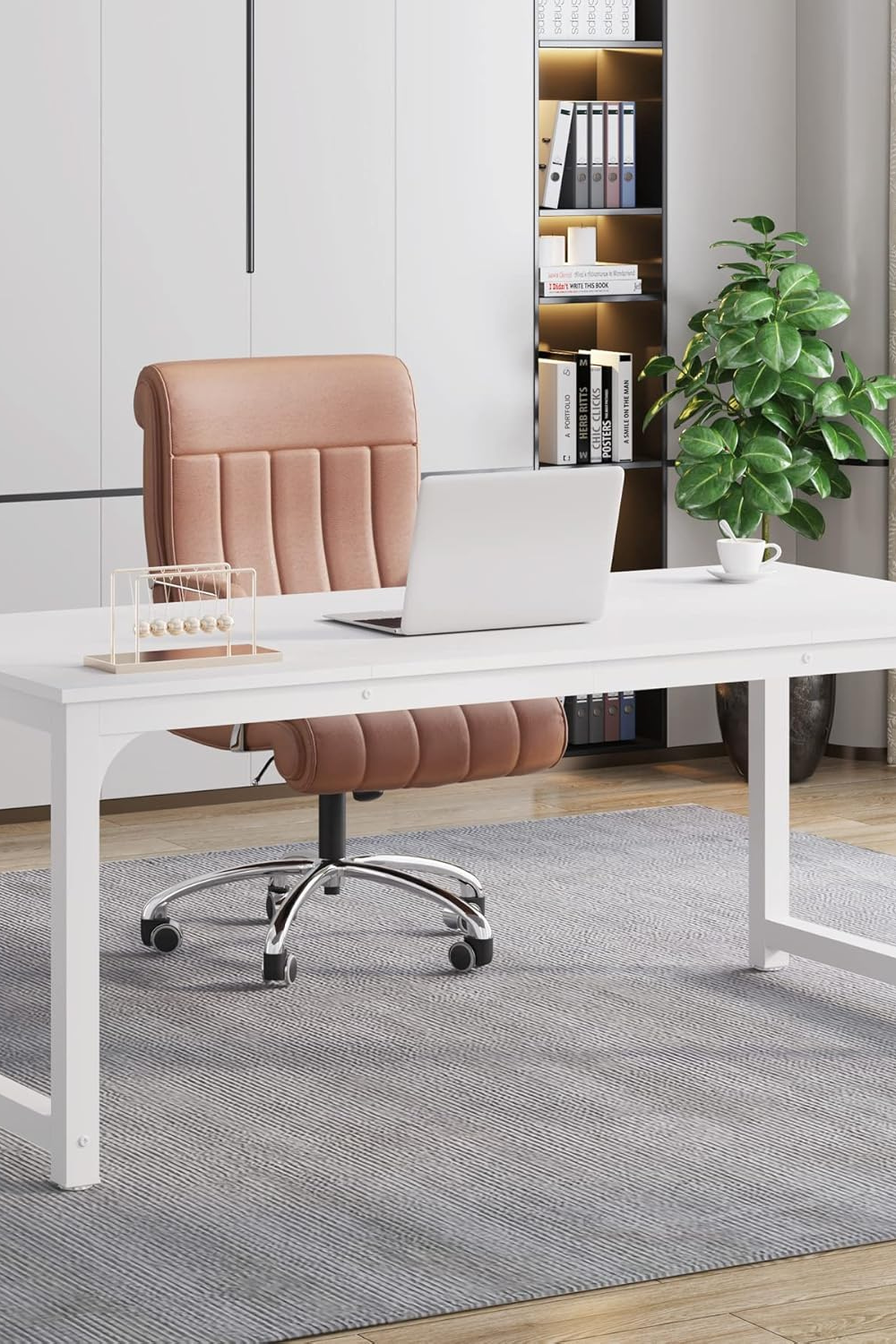
What kind of couch do therapists use?
Therapy couches vs. armchairs: what works better?
This comes down to your style of practice. Armchairs offer structure and are easier to position. Couches feel more inviting and may support deeper emotional processing. If you work with families or kids, space matters. For 1:1 sessions, cozy armchairs are often enough.
Material and comfort considerations
Choose soft fabrics that feel inviting and won’t make noise when clients shift. Neutral tones and earthy palettes tend to work well. Comfort is key: think about both back support and how your body feels after five sessions in a row.
Recommendations that combine comfort + style
- Ya-Home – $189.99
Soft texture, neutral palette, and just enough structure to support posture.
buy now →
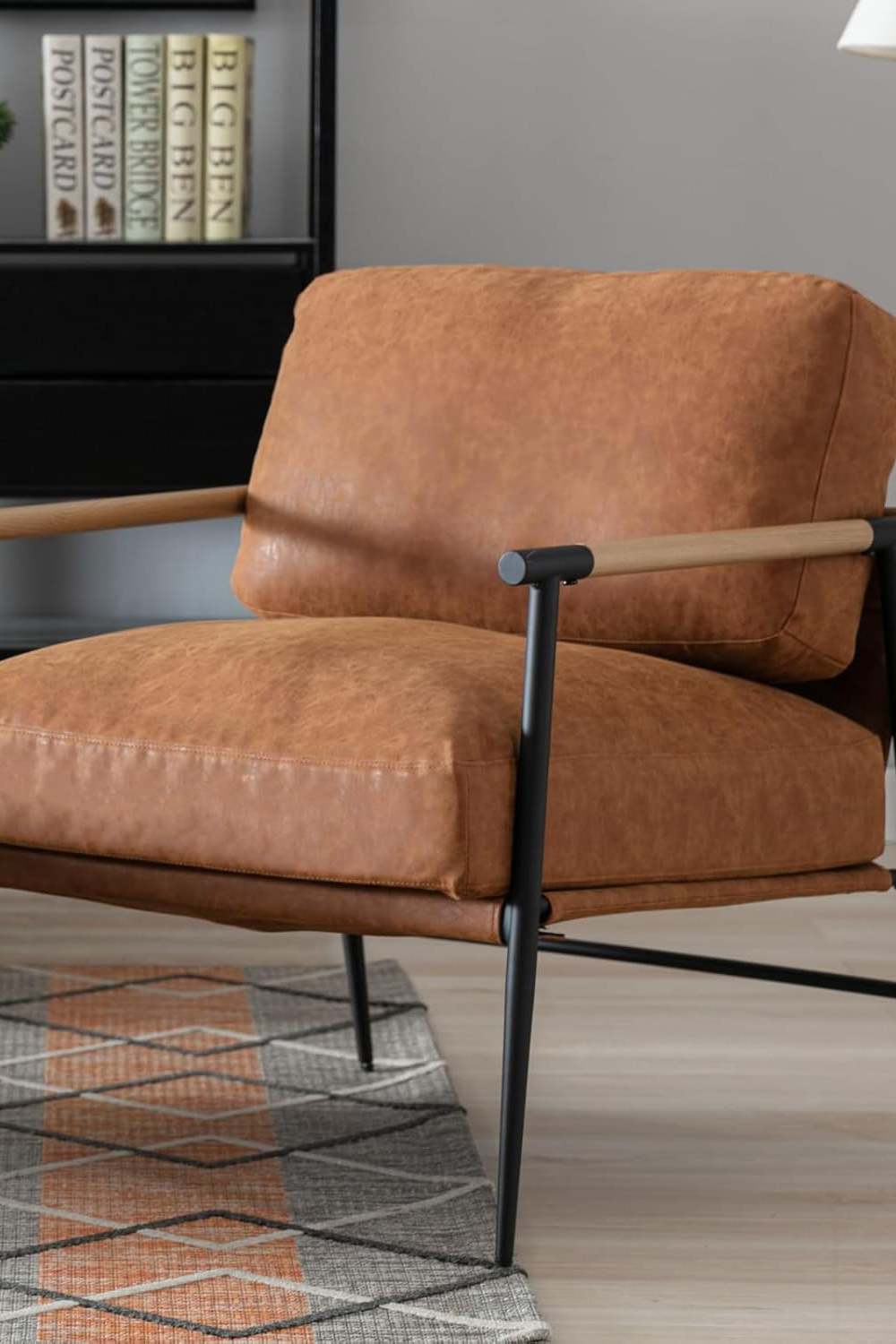
- Ovios – $229.00
Deep and enveloping. Perfect for trauma-informed spaces.
buy now →
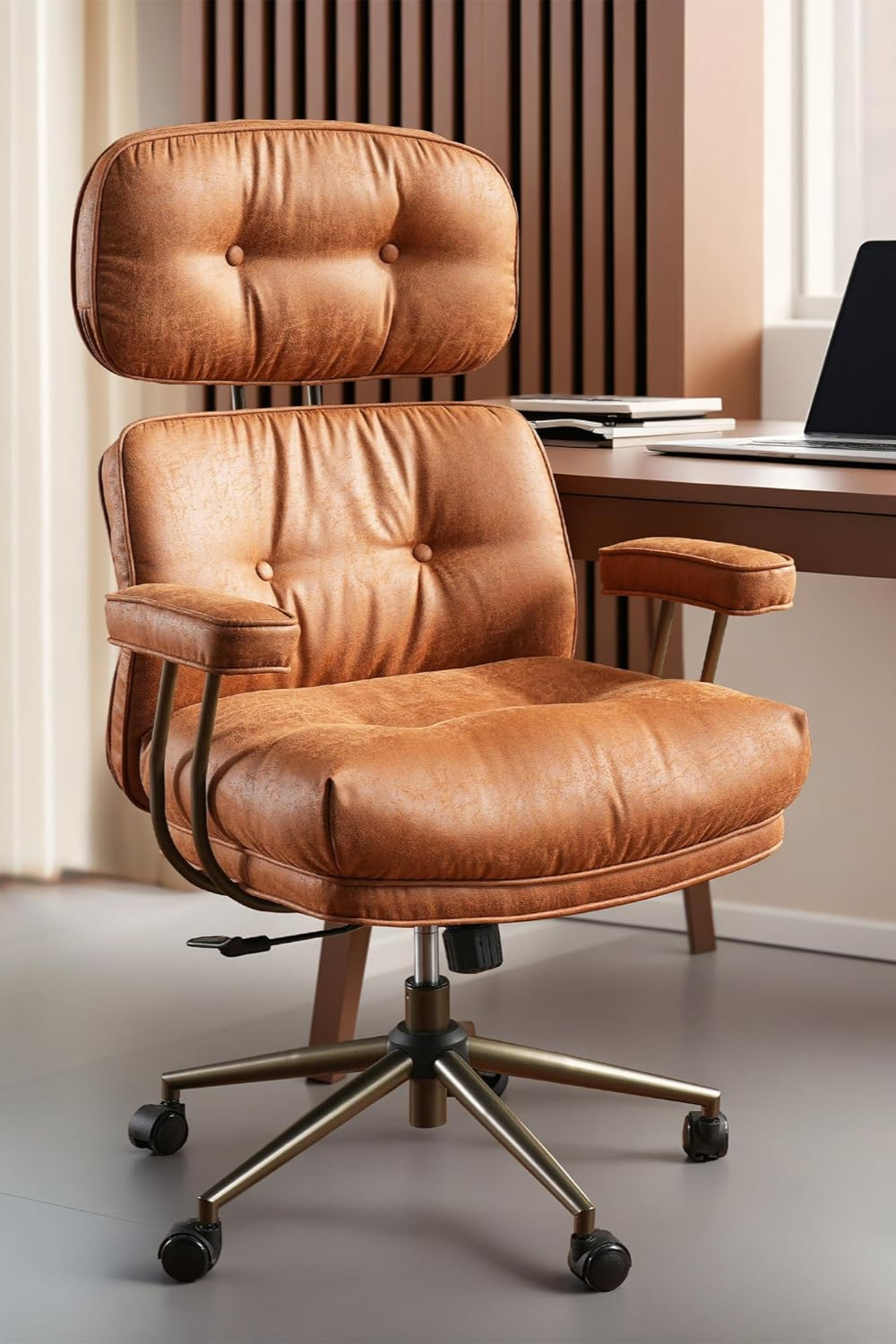
- Okeysen – $134.88
Affordable and inviting with great back support.
buy now →
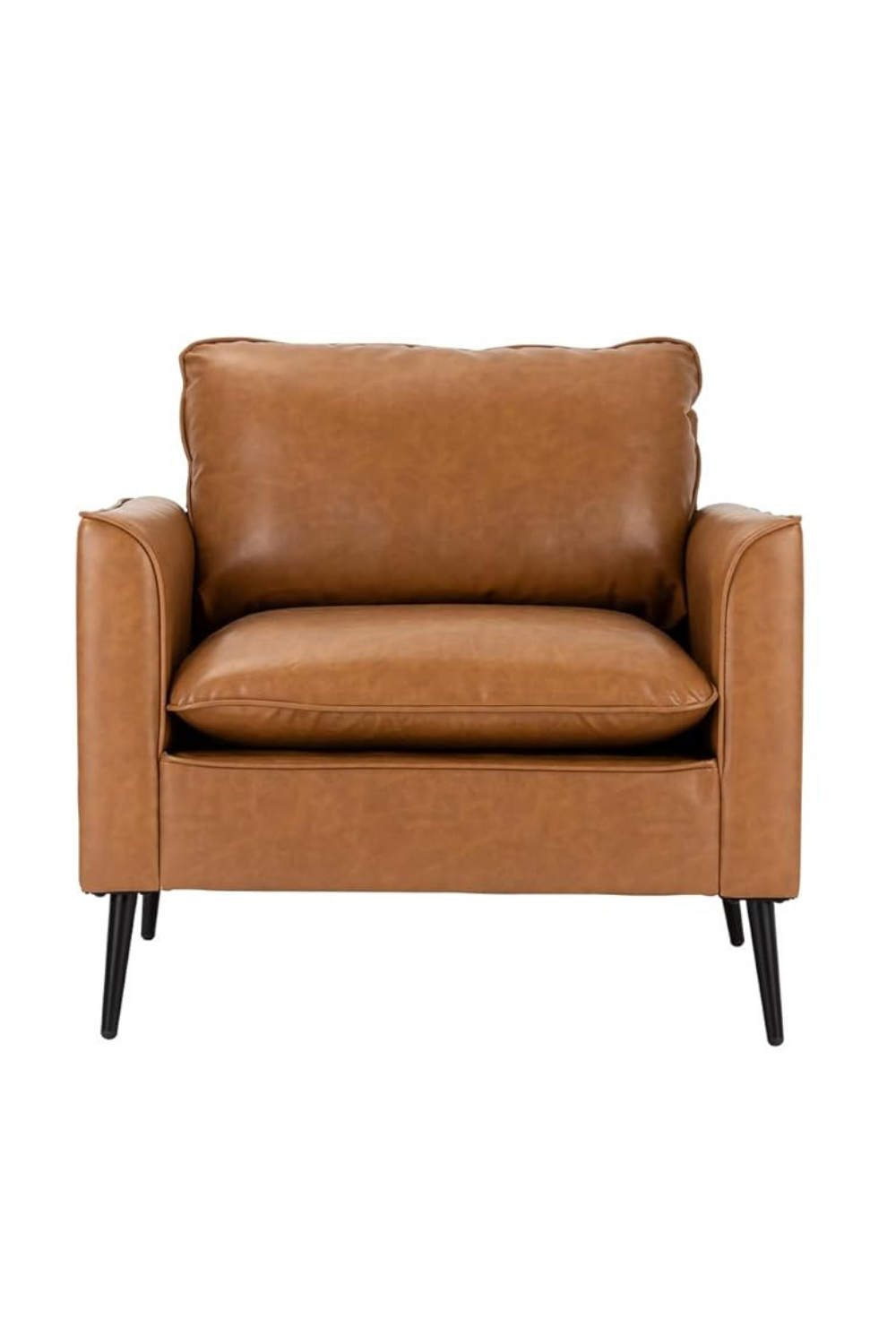
- Ovios – $399.00
A luxury feel for those who want to invest in comfort and design.
buy now →

- Mopio – $349.00
Timeless style with a wide seat and plush cushions.
buy now →

- LINSY – $251.99
Clean lines, cozy texture, and calming tone.
buy now →

What to put in a therapy room?
Rugs: grounding the space and adding texture
A rug does more than decorate—it grounds the energy of the room. It absorbs sound, defines space, and gives clients something soft underfoot. Choose something neutral or textured.
- Shell – $289.00
Plush and richly textured, this piece grounds your space visually and energetically.
buy now →

- Rugshop – $145.49
Earth-toned and versatile, ideal for minimalist or boho-inspired offices.
buy now →

- Loloi – $155.81
A modern pattern that adds personality without overwhelming the room.
buy now →

Lighting: how lamps influence mood
Soft light creates calm. Lamps help break up sterile overhead lighting and give your office a more intimate feel.
- EDISHINE
– $26.99
Sleek and minimalist, this lamp adds soft, adjustable lighting—perfect for late afternoon sessions.
buy now →

- SAFAVIEH – $85.26
A statement piece that doubles as decor. Warm tones and a sculptural design make this perfect for cozy corners.
buy now →

- DLLT – $34.99
Simple, elegant, and budget-friendly. Great for creating pockets of light around the room.
buy now →

Side tables & bookshelves: practical and visual balance
Tables offer comfort and functionality. Bookshelves create personality. Together, they bring warmth and dimension.
Side Tables
- Saint Mossi Tadio – $159.99
Natural wood finish with open storage, perfect for grounding your room’s color palette.
buy now →

- WUPDPQS – $253.99
Elevated design with marble-inspired texture, ideal for creating a serene, sophisticated look.
buy now →

Bookshelves
- Jehiatek – $161.49
A tall, open structure perfect for displaying books and personal touches.
buy now →

- Otter Oasis – $159.99
Sleek and functional with neutral tones that blend easily into any office style.
buy now →

- LEYAOYAO – $89.96
Compact and charming—great for small rooms or corner spaces.
buy now →

Final touches that make a difference
Plants, art and sensory-friendly details
This is where the soul of your space shows up. Thoughtful details help people feel at home.
- Diffuser kakoda – $34.99
Fill your room with calming essential oils for a multi-sensory experience.
buy now →

- Drift Candle
– $34.00
Soft glow and subtle scent—perfect for grounding a session.
buy now →

- M&SENSE Candle – $24.99
A gentle option for low-light moments.
buy now →

- Decorative Books – $25.99
Aesthetic and thoughtful additions to any shelf.
buy now →

- Abstract Sculpture – $15.75
Adds artistic depth and meaning to your table or shelf.
buy now →
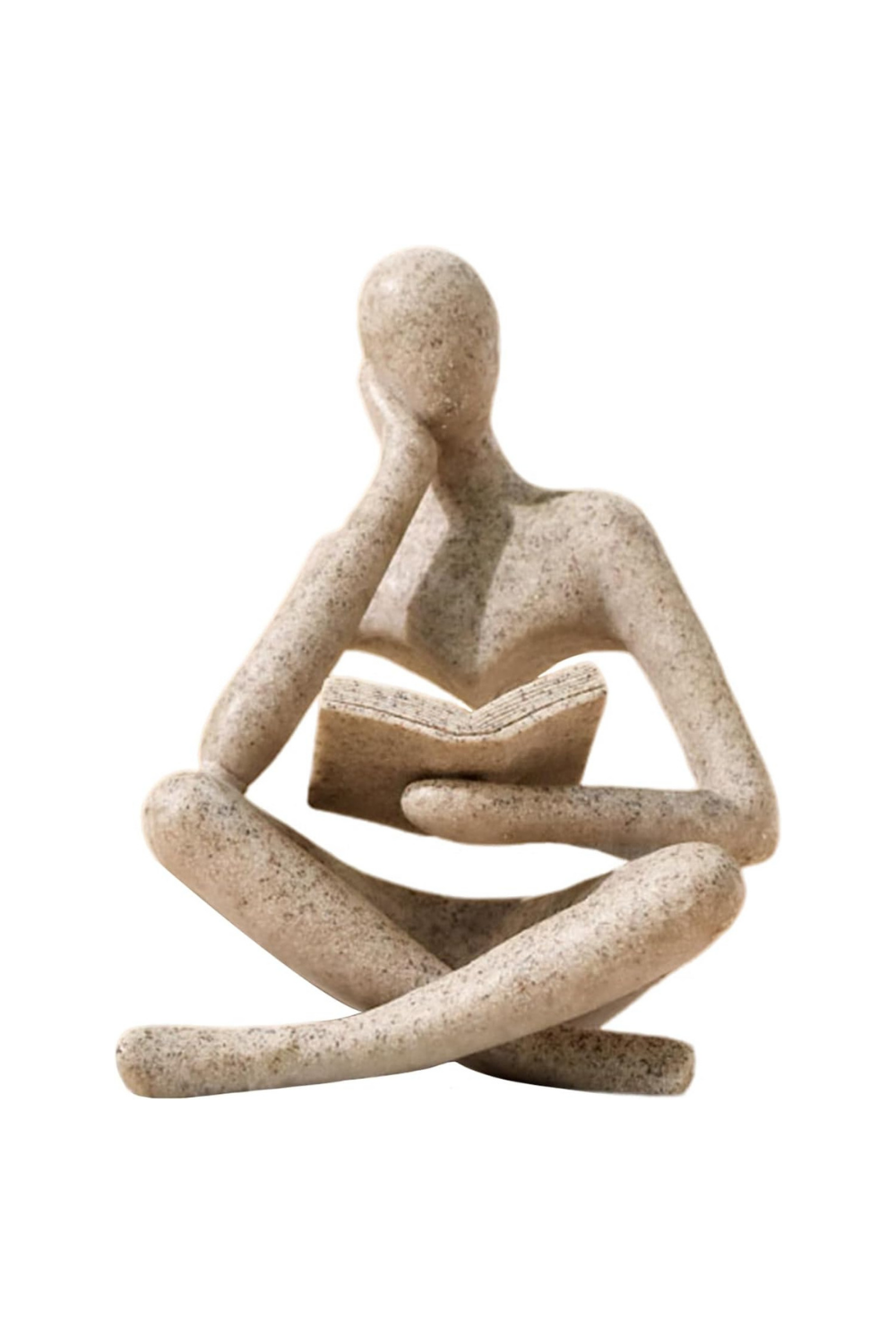
- Decorative Pillows – $25.99–$28.99
Add softness and contrast to your client’s seat.
buy now →

- Plants – $23.99–$69.98
Lush, grounding greenery for warmth and vibrancy.
buy now →

- Decorative Frame – $22.99
Use for certifications, art, or personal meaning.
buy now →

How to make your space feel inclusive and trauma-informed
Inclusion starts with presence and intention. Offer a variety of seating options. Be mindful of scents, sound levels, and lighting. Use diverse art. Avoid overstimulation.
Let every item in your office say: "You are safe. You are welcome. You matter."
Ready to align your online and offline presence?
You've designed your space with purpose—let's make sure your website reflects the same level of alignment and intention.
Explore my web design services for private practice professionals and therapists here →
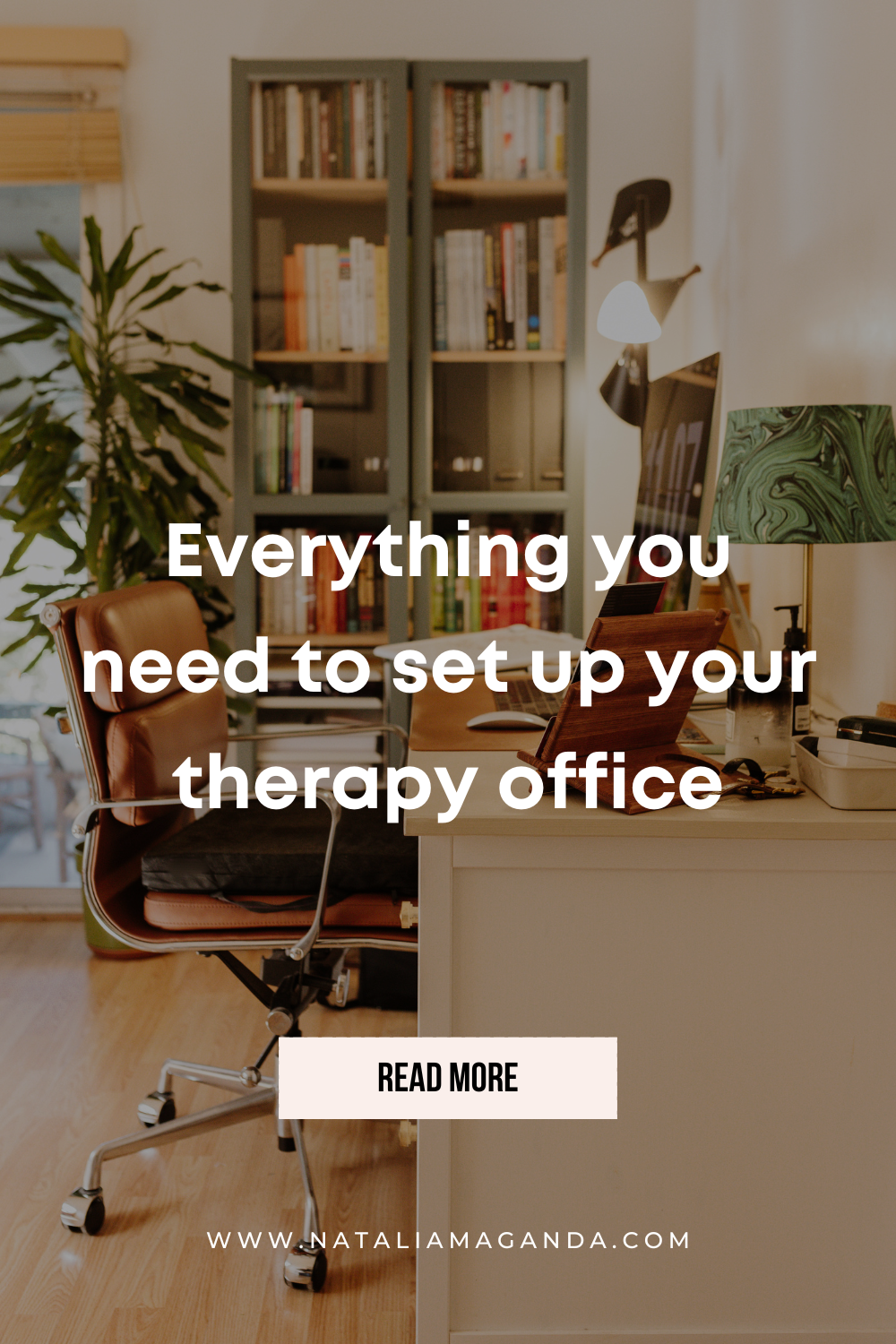
* AI Disclosure: This content may contain sections generated with AI with the purpose of providing you with condensed helpful and relevant content, however all personal opinions are 100% human made as well as the blog post structure, outline and key takeaways.
* Affiliate Disclosure: Some of the links on www.nataliamaganda.com may contain affiliate links meaning that I will get a commission for recommending products at no extra cost to you.

hello! i'm natalia
Latina, web design expert for mental health professionals.
I help ambitious life coaches, therapists and holistic leaders amplify their magic, gain visibility, and simplify their marketing efforts through strategic web design and content.










